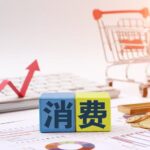In the first half of the year, the gross domestic product increased by 5.3% year-on-year, 0.3 percentage points higher than the same period last year. “China’s economic foundation is stable, with numerous advantages, strong resilience, and great potential. The supporting conditions and fundamental trend of long-term growth remain unchanged.”
This assessment can be substantiated through the finer details of economic activity: stepping into a retail store, observing new consumption trends through a smartwatch; entering a factory, witnessing the transformation and upgrading of manufacturing through industrial robots; visiting a foreign trade company, seeing how cross-border e-commerce expands channels and stabilizes orders… A small clue may reveal the general trend. Starting today, this edition launches the “Mid-Year Economic Micro-Observations” series, examining the momentum and vitality of China’s economy in the first half of the year through vivid case studies.
“This watch’s standout feature is its automatic alert for abnormal blood pressure.”
“When customers ask about the one-click health check function, explain it like this…”
“After national subsidies, this watch saves 448 yuan—make sure to clarify this for customers.”
At 9 a.m., during the morning meeting at Huawei’s Smart Life store in MixC Mall, Changsha, Hunan, sales associate Wu Qian and her colleagues simulate customer scenarios, repeatedly reviewing the health and fitness tracking features of several smartwatch models.
“Explaining health functions and subsidy policies clearly is a key part of our evaluation,” Wu Qian says, flipping through a training manual densely packed with sections like “Health Monitoring Features,” “Fitness Function Demonstrations,” “Subsidy Application Process,” and “FAQs.”
Right after the meeting, Wu Qian receives a call from the regional manager: “Stock is running low on a few models, especially those with blood pressure monitoring. We need to restock.” Checking inventory, she submits a restocking request, noting: “Demand is rising—70% of customers inquire about blood pressure monitoring.”
The restocking rush is closely tied to the consumer upgrade trend driven by trade-in policies.
“I’ve used this fitness tracker for years and want an upgrade—better battery life and more features,” says Wang Yucheng, a middle-aged shopper trying on different models while his wife compares straps to match her outfits.
“You’ve been sleeping poorly—this sleep tracker seems useful,” she remarks. “And it logs workout duration and calories burned.” After testing the features, Wang asks, “How much after subsidies?”
“The white leather strap model is 1,688 yuan. Your old tracker gets a 200-yuan discount, plus a 400-yuan store subsidy and an 85% national subsidy—final price: 924.8 yuan,” the clerk calculates.
Wang nods, opting for a matching pair: “Stacking discounts makes it a great deal.” The clerk guides him through claiming subsidies via a mobile app—saving 763.2 yuan in 30 seconds. This seamless process helped the store sell over 400 smartwatches in June alone.
Nearby, customer Chen Xia tests a new model: “Online specs are too abstract. Trying it in-store helps, and the subsidies save hundreds. Features like heart rate variability and blood oxygen tracking are perfect for workouts.”
Another shopper, Liu Ming, brings his father: “He has hypertension—can you recommend one?” The clerk demonstrates blood pressure tracking and emergency alert features. Liu marvels, “This watch is like a mobile health guardian.”
As trade-in policies take effect, such scenes play out nationwide. Compact wearables have become a unique lens into consumption upgrades. Expanded subsidies this year—covering phones, tablets, and smartwatches—have boosted sales: over 69 million consumers purchased 74 million digital products.
“Health monitoring is now a top priority,” observes Wu Qian. “Before, customers cared about battery life and price. Now they ask about blood pressure and oxygen tracking. We’ve had to study up to keep pace.” Stores now mandate subsidy training and have shifted weekly sessions from memorizing specs to interpreting health data.
Product innovation matches service upgrades. Entry-level wearables cover basic fitness, while premium models focus on health management, some partnering with medical institutions to enhance accuracy. “Two more pre-orders just came in,” Wu Qian notes at closing, promptly requesting additional stock.
Evolving consumer preferences and upgraded products reflect the dual impact of trade-in policies—benefitting both households and industries, all captured in the miniature “health ledger” of a smartwatch.




